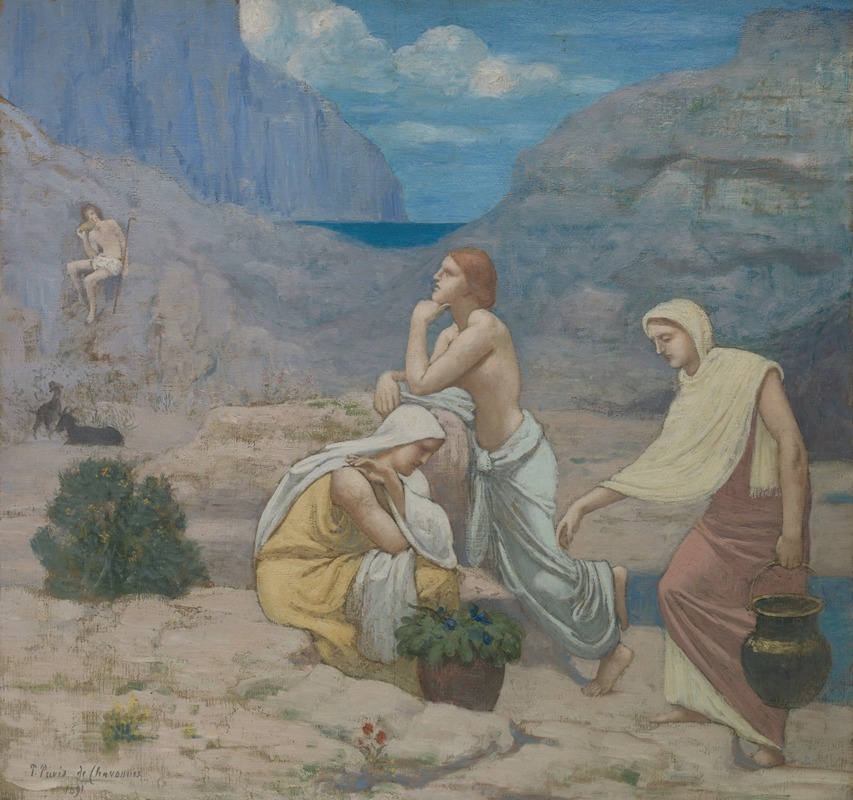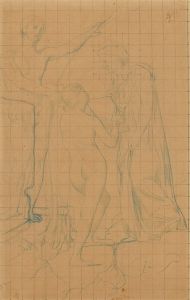
The Shepherd’s Song
A hand-painted replica of Pierre Puvis de Chavannes’s masterpiece The Shepherd’s Song, meticulously crafted by professional artists to capture the true essence of the original. Each piece is created with museum-quality canvas and rare mineral pigments, carefully painted by experienced artists with delicate brushstrokes and rich, layered colors to perfectly recreate the texture of the original artwork. Unlike machine-printed reproductions, this hand-painted version brings the painting to life, infused with the artist’s emotions and skill in every stroke. Whether for personal collection or home decoration, it instantly elevates the artistic atmosphere of any space.
Pierre Puvis de Chavannes, a prominent 19th-century French painter, is widely recognized for his contributions to the Symbolist movement and his distinctive mural-style works. One of his notable paintings, The Shepherd’s Song (Le Chant du Berger), exemplifies his characteristic approach to composition, color, and thematic exploration. Created in 1891, this artwork reflects Puvis de Chavannes’ interest in timeless, pastoral themes and his ability to evoke a sense of serenity and introspection.
The Shepherd’s Song depicts a tranquil rural scene, where figures are harmoniously integrated into a simplified, idealized landscape. The painting features a shepherd playing a pipe, surrounded by a group of attentive listeners, including both humans and animals. The setting is pastoral, with rolling hills, sparse trees, and an open sky that conveys a sense of vastness and calm. The composition is carefully balanced, with a muted color palette dominated by soft earth tones and gentle blues, which contribute to the meditative atmosphere of the piece.
Puvis de Chavannes was known for his rejection of the dramatic realism that characterized much of 19th-century academic art. Instead, he sought to create works that transcended specific historical or geographical contexts, aiming for a universal, timeless quality. In The Shepherd’s Song, this approach is evident in the idealized figures and the absence of overt narrative details. The painting does not depict a specific event or story but rather evokes a mood of harmony and contemplation, inviting viewers to reflect on the relationship between humanity and nature.
The painting was executed in oil on canvas, a medium Puvis de Chavannes frequently used for both his easel paintings and preparatory studies for his large-scale murals. While he is best known for his monumental public works, such as those in the Panthéon in Paris, The Shepherd’s Song demonstrates his ability to translate his muralist sensibilities into smaller, more intimate formats. The work’s simplicity and clarity of design are hallmarks of his style, which had a significant influence on later artists, including the Symbolists and early modernists.
Today, The Shepherd’s Song is recognized as an important example of Puvis de Chavannes’ oeuvre, showcasing his mastery of composition and his unique vision of art as a means of conveying universal, poetic themes. The painting is housed in the Musée d'Orsay in Paris, where it continues to be appreciated by audiences for its quiet beauty and contemplative spirit.


















